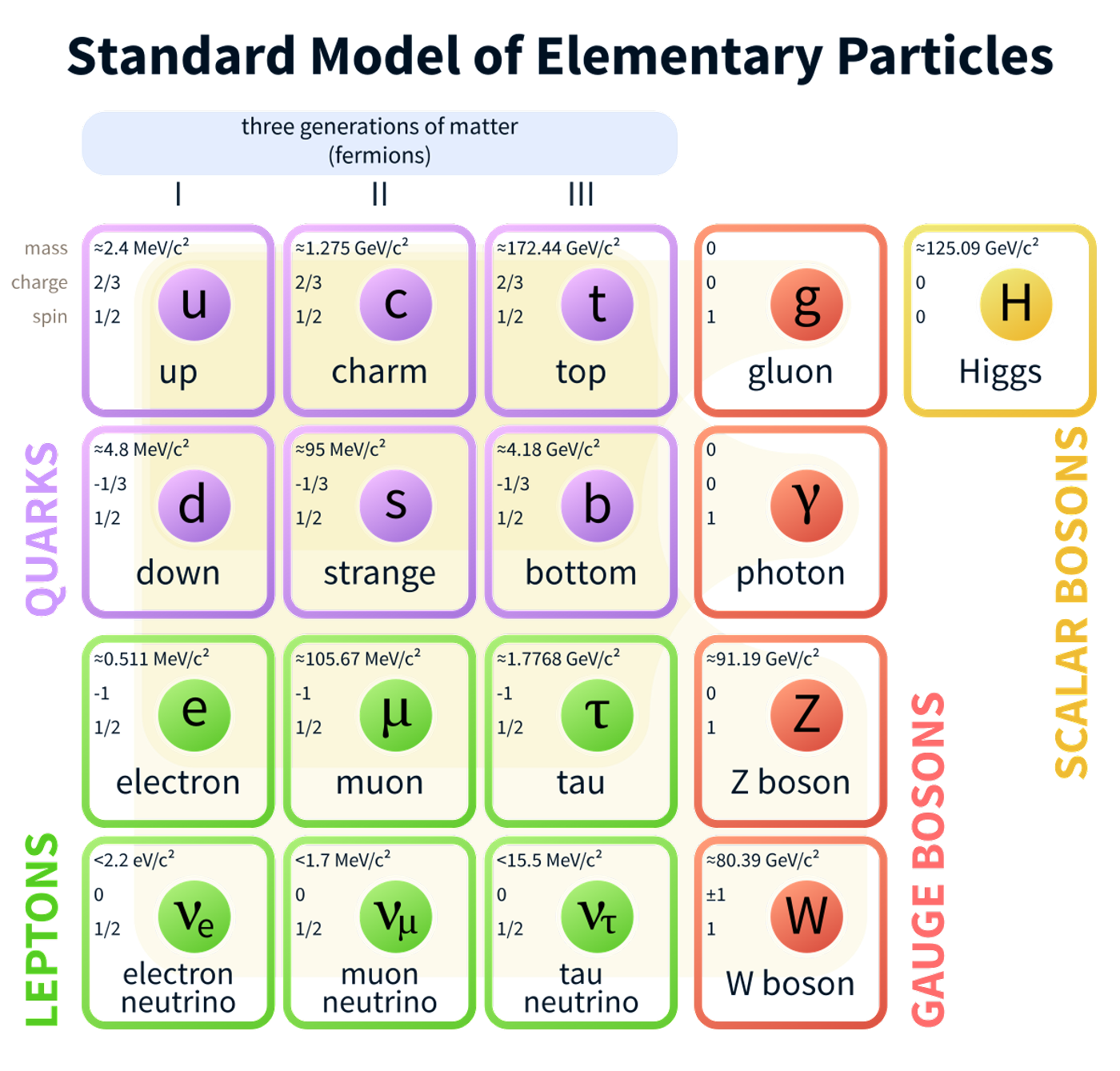The Known and Unknown in the Standard Model of Particle Physics
The Standard Model of Particle Physics is the collection of discoveries and theories that describe the smallest units of matter and the interactions between energy and matter. According to this model, everything in the universe is made from subatomic structures known as fundamental particles - quarks, leptons, and bosons, and governed by four fundamental forces - strong and weak nuclear forces, electromagnetism and gravity.
Quarks and leptons are also known as Fermions, and they make up matters. The quark group includes six particles including: up, down, charm, strange, top and bottom quarks. The lepton group includes the electron neutrino, muon neutrino, tau neutrino, electron, muon and Tau particles. Within Fermions, particles are related in pairs or generations. The lightest and most stable particles make up the first generation, whereas the heavier and less stable particles belong to the second and third generations.
The group of bosons include the photon, gluon, Z particle, W particle and the Higgs. They are the carriers for forces: the strong force is carried by the gluon, the electromagnetic force is carried by the photon, and the W and Z bosons are responsible for the weak force. Graviton, the theoretical boson that is responsible for gravity, is still being searched by scientists around the world. The Higgs boson, discovered in 2012, is thought to underpin the generation of mass.
The Standard Model has successfully passed the tests of decades-worth experiments and precisely predicted a wide variety of phenomena. But it is far from complete: one of the four fundamental forces gravity cannot be explained in this model; nor does it elucidate the existence of dark matter and dark energy (27% and 68% of the universe’s total mass-energy) and many other puzzling questions.
Elementary Particles in the Standard Model. Credit: Wikipedia
Source: CERN/Live Science
Video link credit: CERN - The Standard Model of Particle Physics









